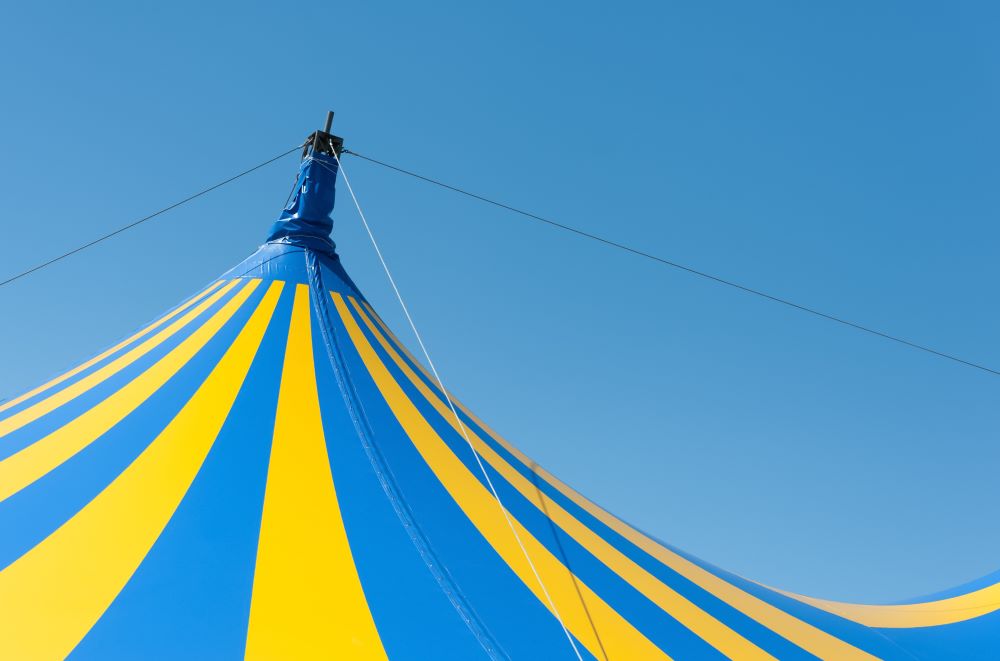
In The Nonprofit Imagineers, I challenge you to ask yourself “what if, rather than thinking like the 60-year old organization that we are, we could act as if our organization was established today?” Would you do things the same way? Send the same newsletter? Serve the same mission?
For exactly one year, Walt Disney didn’t need to ask this question. His theme park was brand new, with no institutional memory, and nobody to tell him “that’s not how we’ve always done it…”
What did Walt do with this creative freedom? He built himself a circus. And he failed miserably.
The Mickey Mouse Club Circus

Shortly after opening Disneyland, Walt knew that he needed to do something special for the upcoming 1955 holiday season. Disneyland had yet to exist during the holiday season, so whatever Walt decided to do, it would be brand new. Walter Knott, the founder of nearby Knott’s Berry Farm amusement park, told Walt Disney not to bother with the holidays – people preferred shopping and being with family at home, and wouldn’t visit a theme park.
As we know, a problem is really an opportunity to be creative. Walt Disney decided that the best way to attract a crowd was also an opportunity to fulfill his childhood dream and open a circus, complete with acrobats, clowns, and live animals. But his circus would be different! His would feature cast members from his hit TV show The Mickey Mouse Club. Surely, people would turn up in droves to see their favorite stars!
Well, not everyone felt that way. At the time, Walt Disney had just 17% ownership of Disneyland, so he had to get the buy-in of his partners, who did not feel it was a good investment. As such, the agreement they struck was that Walt Disney would lease space inside Disneyland, front all of the money required for the circus, and keep all of the profits. This way, all owners of Disneyland would benefit from the circus regardless of its success.
In the empty, undeveloped land currently occupied by the Autopia, Walt built the largest circus tent ever constructed and filled it with three rings and seating for thousands of guests. He spent a significant amount of money on the attraction, and thus had to charge 50 cents per guest (on top of their entry fee to Disneyland itself).
The circus met its fair share of challenges, including clowns and performers that were used to the carnival life, and were often found drinking, smoking, and cursing within earshot of young visitors. The live animals were also problematic, with one account of the llamas breaking free of their enclosures and going for a stroll down the railroad tracks. But all of these paled in comparison to the real problem with the circus – the stands were always empty!
As it turned out, people didn’t want to pay 50-cents per person to attend Walt’s circus (a fee roughly the same price as entry to Disneyland), nor did they want to give up 90 minutes of their day at Disneyland to attend a circus.
In the end, the Mickey Mouse Club Circus lasted less than three months and was a huge financial failure for Walt Disney.
What we learn about nonprofit innovation
Had you ever heard that story before? Probably not… because we don’t remember failures. Failures are a dime a dozen. They happen all the time. We don’t think about the 999 versions of the lightbulb that didn’t work – we know about the one that did. We don’t think about all of the failed Disneyland attractions and Disney films – we know about the ones that were successful.
Walt had to build a circus in order to learn that it wouldn’t work. He had to build countless attractions for the same reason. Visit Yesterland to see just how many exist.
The bottom line is, you don’t know what will work until you find out what won’t. The only way to innovate and make progress is to make a few mistakes and learn from more than a few failures.
Don’t be afraid of failure – it’s the only way to find success! And don’t be afraid to ask “what if, rather than thinking like the 60-year old organization that we are, we could act as if our organization was established today?” It might be the best way to find new, innovative, creative ideas!
This story wasn’t in The Nonprofit Imagineers, but there are well over 100 other stories and examples from Walt’s life, his films, and his theme parks. Buy your copy today! Let’s be Dreamers!
 Celebrate 2 years of Imagineering!
Celebrate 2 years of Imagineering!
Comments are closed